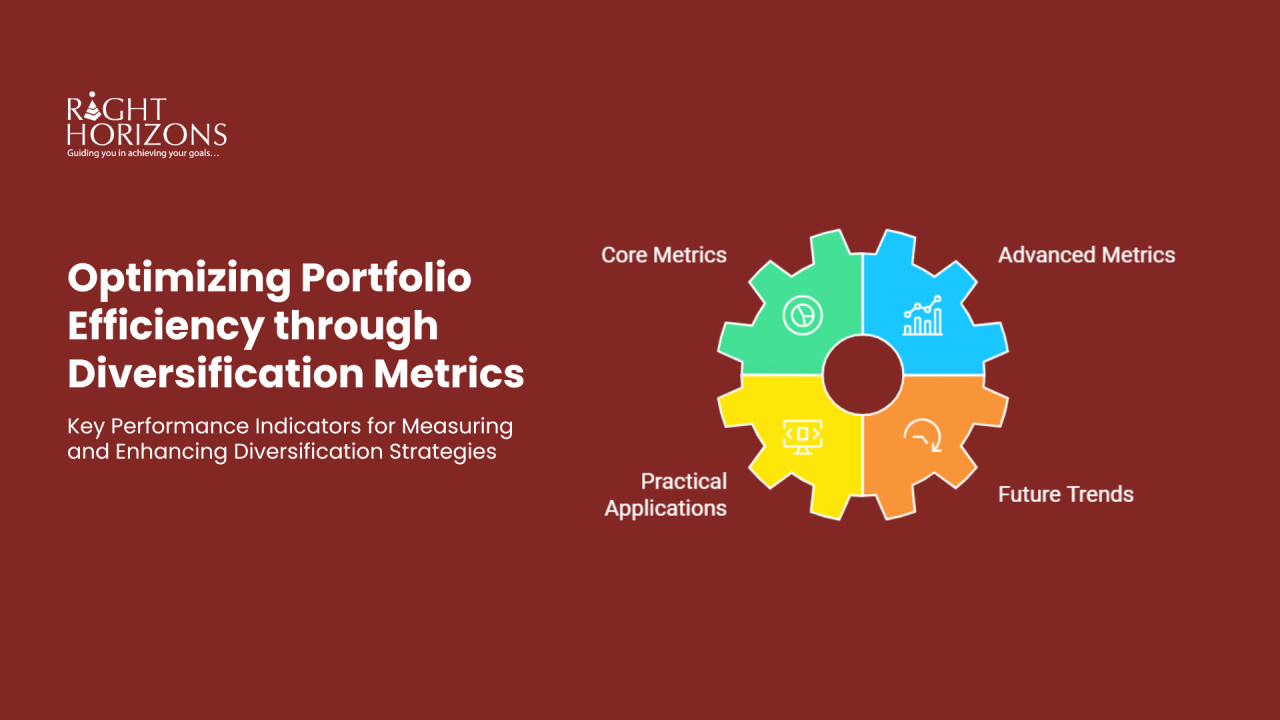
Maximizing Portfolio Performance: The Art and Science of Diversification Metrics
In the ever-evolving landscape of wealth management, diversification remains a cornerstone strategy for balancing risk and reward. But how can investors truly measure the effectiveness of their diversification efforts? Enter diversification performance metrics – powerful tools that can optimize portfolios and drive better investment decisions.
?The Importance of Measuring Diversification
Harry Markowitz, the father of modern portfolio theory, emphasized diversification as a key to reducing portfolio volatility. However, as investment strategies have grown more complex, so too has the need for sophisticated methods to evaluate diversification effectiveness.
Measuring diversification performance serves several critical purposes:
1. Evaluating risk-adjusted returns
2. Identifying areas for portfolio improvement
3. Aligning portfolios with investor risk tolerance
By leveraging these metrics, investors can gain valuable insights into their portfolio's health and make data-driven decisions to enhance performance.
?Core Diversification Performance Metrics
To effectively measure diversification, investors rely on a set of fundamental metrics:
?Risk-Adjusted Return Measures
1. Sharpe Ratio: Measures excess return per unit of risk
2. Treynor Ratio: Evaluates excess return relative to systematic risk
3. Information Ratio: Assesses active return relative to active risk
?Portfolio Risk Measures
1. Standard Deviation: Quantifies overall portfolio volatility
2. Beta: Measures a portfolio's sensitivity to market movements
3. Correlation Coefficients: Evaluate relationships between assets
These core metrics provide a solid foundation for understanding a portfolio's risk-return profile and the effectiveness of its diversification strategy.
?Advanced Diversification Metrics
For investors seeking a more nuanced understanding of their portfolio's diversification, advanced metrics offer deeper insights:
1. Diversification Ratio: Measures the weighted average of asset correlations
2. Portfolio Entropy: Quantifies the degree of uncertainty in a portfolio
3. Effective Number of Bets: Estimates the number of independent risk factors
These sophisticated tools can uncover hidden risks and opportunities, allowing investors to fine-tune their diversification strategies for optimal performance.
?Asset Class-Specific Diversification Metrics
Different asset classes require tailored approaches to diversification measurement:
领英推荐
1. Equity Diversification: Sector exposure, geographic distribution, market capitalization
2. Fixed Income Diversification: Duration, credit quality, yield curve positioning
3. Alternative Investments: Correlation to traditional assets, liquidity profile, strategy diversification
By applying class-specific metrics, investors can ensure that each component of their portfolio is appropriately diversified and contributing to overall risk-return objectives.
?Practical Applications of Diversification Metrics
Diversification metrics are not just theoretical concepts – they have real-world applications that can significantly impact portfolio performance:
1. Portfolio Construction and Optimization: Use metrics to build well-balanced portfolios that align with investment goals
2. Performance Attribution: Identify which diversification decisions are driving returns or detracting from performance
3. Risk Management: Monitor and adjust portfolio risk exposure in real-time
By integrating these metrics into their investment process, investors can create more resilient and efficient portfolios that weather market volatility and capitalize on opportunities.
?Challenges and Limitations
While diversification metrics are powerful tools, it's important to recognize their limitations:
1. Data Requirements: Accurate metrics rely on high-quality, comprehensive data
2. Time Horizon Considerations: Short-term data may not capture long-term diversification benefits
3. Market Conditions: Metrics may behave differently in various market environments
Investors should use these metrics as part of a holistic approach, combining quantitative analysis with qualitative insights and expert judgment.
?Future Trends in Diversification Performance Measurement
The field of diversification performance measurement continues to evolve, with several exciting trends on the horizon:
1. Machine Learning and AI: Advanced algorithms to identify complex patterns and optimize diversification
2. Real-Time Monitoring: Continuous assessment and adjustment of portfolio diversification
3. ESG Integration: Incorporating environmental, social, and governance factors into diversification strategies
4. Factor-Based Investing: Diversifying across risk factors rather than traditional asset classes
These innovations promise to enhance the precision and effectiveness of diversification strategies, enabling investors to navigate an increasingly complex market landscape.
?Conclusion: A Holistic Approach to Diversification
In today's dynamic investment environment, a comprehensive approach to diversification measurement is essential. By leveraging a combination of core and advanced metrics, investors can gain a deep understanding of their portfolio's diversification and make informed decisions to optimize performance.
As we look to the future, the integration of new technologies and methodologies will continue to refine our ability to measure and implement effective diversification strategies. However, the fundamental principle remains unchanged: diversification is a powerful tool for managing risk and enhancing returns.
By embracing a holistic approach that combines quantitative metrics with qualitative analysis, investors can create truly diversified portfolios that are resilient in the face of market uncertainty and positioned for long-term success.
Head of wealth Management
4 周Very insightful!!